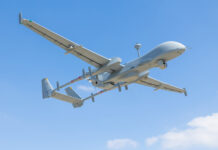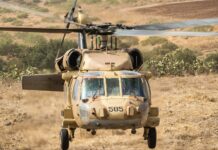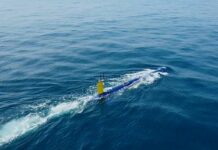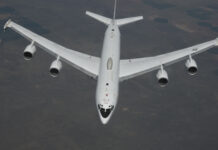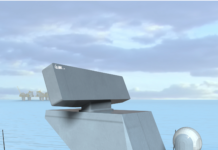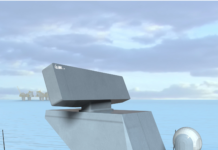Autonomous Unmanned Aerial Vehicles (UAVs) are an increasingly crucial asset for militaries undertaking essential missions even in the absence of communications. There has been a range of advances in recent years, as developers work to overcome a number of technical challenges.
UAVs may require autonomy for a number of reasons. In a recent paper for SIPRI, Justin Bronk, research fellow for airpower and technology at the Royal United Services Institute, noted that if such systems are to make sense as an investment for state-on-state conflicts, they must be able to detect, classify, prioritise and engage targets according to pre-set mission tasks and rules of engagement, without real-time human control. The reason is clear: in a highly contested area, amid a high-intensity scenario, the data or satcom link could be jammed or disrupted.
The technological requirements of such capabilities have already been demonstrated at a range of levels. Indeed, it is unlikely that they would demand any level of advanced automation beyond those seen in other areas of aviation or other sectors, Bronk wrote. For example, the detection and subsequent destruction of enemy combat aircraft in a war ‘is not something that requires subtle judgements in terms of international humanitarian law and estimates of proportionality or collateral damage’, according to the paper.
JADO Battlespace
Advanced militaries are increasingly focused on a joint all-domain operations (JADO) or joint all-domain command and control (JADC2) battlespace, where land, sea, air, space and cyber are more highly integrated than ever before. In this scenario, it will be essential that autonomous UAVs leverage enhanced interoperable networking capabilities, along with a common message standard that will enable the platforms to join Internet of Military Things (IoMT) operations.
This has been a focus for a number of providers; for example, Northrop Grumman is providing its gateway system capabilities on multiple legacy platforms, but is also preparing next-generation systems that will integrate communications and sensor systems more securely, according to Colin Phan, director of strategy at the company’s Networked Information Solutions Division.
Collaborative autonomy software will also be important in this environment, allowing for the effective management of autonomous fleets, where heterogeneous autonomous systems, legacy UAVs and manned systems will be required to operate together and interact in highly contested environments. Northrop Grumman’s Distributed Autonomy/Responsive Control (DA/RC) system aims to drive such tactical interoperability across allied forces, according to Autonomous Systems Chief Strategist John Haun. The aim is to improve the ways in which humans and machines collaborate, Haun said, but “also allow machines to work better together, including systems from different service branches”.
For developers of autonomous UAVs, it is vital to consider the current threat environment. Airspace that was once thought permissive is becoming increasingly contested, demanding survivable UAVs that provide a persistent, multirole capability.
Manufacturers are taking various approaches to delivering this capability. For example, Lockheed Martin Skunk Works – which has developed a range of UAVs and is currently working on a number of new projects, such as the Next Gen UAS and LongShot programmes – develops open architecture standards and works to enable integration and connectivity in a JADO or JADC2 environment.
This is viewed as a critical capability, notably for the US and its international allies to operate in the advanced threat environment. It is also important to consider interoperability with existing assets, with the Next Gen UAS functioning as an unmanned ISR system that enhances the capability of existing assets.
Technological Complexities
It is important to consider the practicalities of developing and operating such systems, not least on a cost level. One way to help ensure affordability is through utilising digital engineering, such as the deployment of “Digital Twins”, according to Lockheed Martin. Such concepts aim to overcome a key challenge with such systems – balancing affordability with advanced capability. Digital engineering can replace siloed designs with a fully integrated digital backbone, in which the entire system is iteratively designed, with engineering, production, supply chain and other elements connected through a cohesive digital thread.
Operating UAVs autonomously is much more technologically complex than operating with a human in the aircraft, demanding additional safety features and machine redundancies. This is particularly challenging “as we are building artificial intelligence and machine learning into an automated flying environment that is characteristically unforgiving”, according to Mark Dillon, Director of Business Development at Aurora Flight Sciences, an autonomous aircraft systems specialist that is part of Boeing. The company is focused on autonomy and interoperability on a number of levels, including enhancing manned-unmanned teaming for the US Navy’s MQ-25 programme, work that it is carrying out with Boeing. The MQ-25 is one example of the logistics potential of autonomous UAVs, with the system set to operate from aircraft carriers to autonomously provide in-flight refuelling for aircraft.
Autonomy will be a key area of development across a wide variety of platforms looking forward, not just in terms of UAV missions, but also in counter-UAS applications. For example, Aurora participated in the US Department of Defense’s technology demonstrator focused on Low Collateral Effects Interceptors (LCEI), through which the company demonstrated the Modular Intercept Drone Avionics Set (MIDAS), an AI-enabled autonomous solution with optical sensors and a customised payload designed to defeat multiple adversarial UAS. The system is cued from ground radar and locks onto targets autonomously with its on-board sensor.
Challenges
and Opportunities
Autonomous UAVs must prove their worth on a number of levels, the most basic of which is demonstrating their effectiveness when compared to manned systems. They must prove their ability to preserve manpower for operational functions, increase operational efficiency and reduce threats to human life. Additionally, the systems must complement manned systems effectively, among a range of other challenges, said Dan Bichman of the Malat division of Israel Aerospace industries (IAI). IAI Malat produces the HERON family of military UAVs, which can fly in an autonomous mode, though is always monitored by a human operator.
There are likely to be a range of technological advances in the coming years aimed at supporting such objectives. For example, some industry experts expect to see developments in vertical take-off and landing (VTOL) capabilities for tactical missions at land and sea, along with wide-area surveillance using UAVs in these domains. Autonomous UAVs are also likely to increasingly supply logistics supply and support, Bichman said, adding that he expects to see the further development of “systems to analyse and distribute information in real-time across all levels”.
There are a range of exploratory activities in the US Department of Defense and beyond related to the use of AI in airborne applications, including swarm operations, manned-unmanned teaming, and sensor data processing. Vern Boyle, Northrop Grumman’s vice president for advanced processing solutions, also highlighted a number of interrelated disciplines, which will utilise similar technologies and will often need to be integrated with autonomous UAV solutions: these include cognitive electronic warfare (EW) and intelligence JADC2 applications.
“In the future, early adoption of artificial intelligence applications will most likely be in the areas of intelligence, surveillance, reconnaissance (ISR) data processing, in support of a variety of missions, including ISR in support of strike missions,” Boyle added.
This article originally appeared in the July issue of European Security & Defence. Click here to download the full issue in PDF format.




